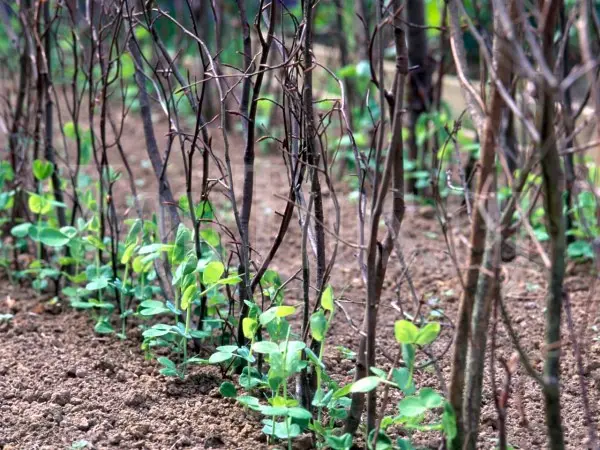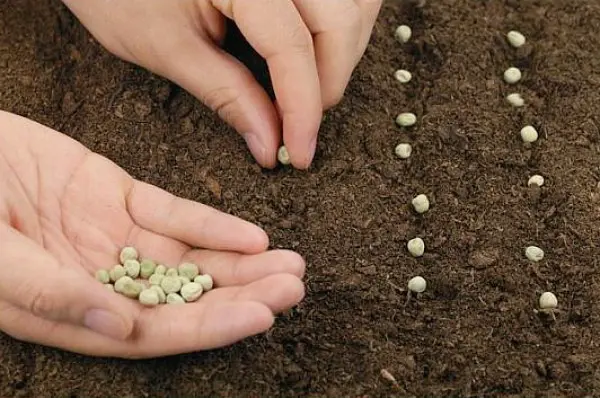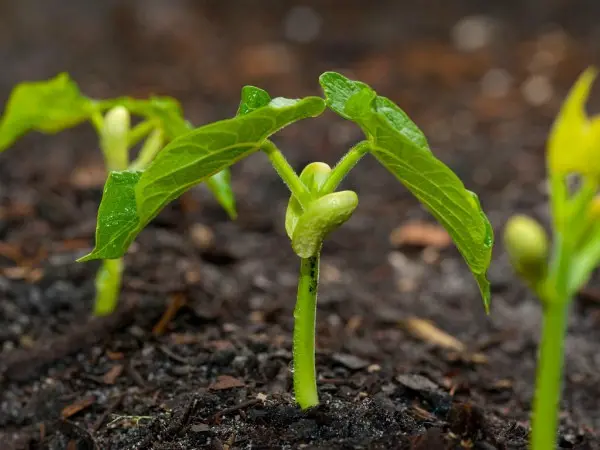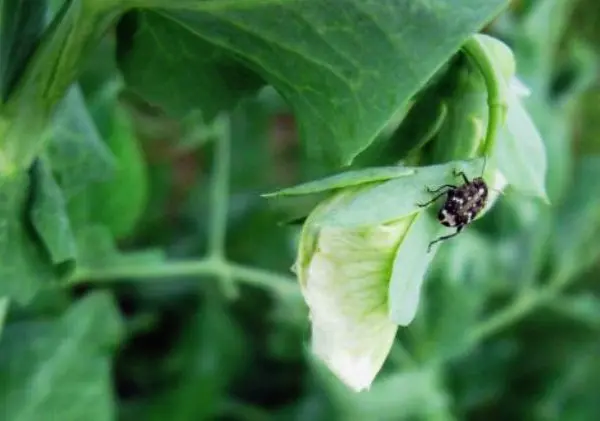Contents
Growing peas in open ground requires careful preparation, basic knowledge of what kind of care the plant needs, what kind of soil contributes to a rich harvest. All this certainly comes with experience. But when you just start growing this crop on your site, you have to face many questions and problems. We will talk about how to properly grow peas on your site in this article.
Features of growing peas
It will not work to get at least a slightly tasty crop of peas if you sow it anyhow and where you have to. Peas need space, a moderate amount of sunlight and a lot of heat. Therefore, if summers are hot and dry in your area, it is better to plant peas in the shade of buildings or trees so that they do not dry out.

Try to choose a place so that the predecessors of green peas are cucumbers, potatoes, pumpkins or cabbage. But after peas, you can grow anything, moreover, next year it is not necessary to be zealous with nitrogen fertilizers. There will be a lot of them in the soil after peas.
Crop rotation should be observed, returning peas to their place no earlier than after 3 years.
Give preference to unpretentious varieties, the so-called peeling. They cannot boast of the sweetness of peas, but at the same time they are less susceptible to fungal diseases and are suitable for conservation. Moreover, peeling varieties can be planted in early spring – from mid-March.

Seed and soil preparation
Before planting, decide which variety you like. Among the most resistant varieties to various kinds of fungal diseases, Uladovsky Jubilee, Excellent 240, Chernigovsky 190, Marat Neosypaschiysya 1, Kubanets 1126, Ramonsky 77 are distinguished. Caring for these varieties is somewhat easier, like for any hybrid plants. Among other varieties that may attract your attention, English (large peas, different plant heights) and Snowy (very sweet peas in flat pods) should be noted.
Peas, as a rule, are not grown for seedlings, but are immediately planted in open ground. Therefore, start preparing for planting a few weeks before the designated date. First of all, select seeds suitable for growing – without chips, wormholes and stains. Also place the peas in salt water. Throw away the peas that have surfaced, they are affected by the pea weevil. Peas can be sprouted. To do this, wrap them in a cloth soaked in a solution of boric acid or potassium permanganate.

Before planting, you should also fertilize the soil. It is better not to use nitrogen fertilizers, since the root system of peas sufficiently saturates the soil with nitrogen. Use double superphosphate (15 g), potassium (15 g), phosphorus (10 g), urea (10 g). If there is clay soil or sand on the site, then mix it with compost. The ideal option is loose, fertile soil.
Landing
Most varieties can be planted in early April, but some hybrid varieties can be planted in mid-March. Be guided by soil temperature, as this is a key factor for the growth of peas.

6-7 days before planting, make furrows 5-6 cm deep in the area, fill them with compost, and then sprinkle with earth. The depth of the furrow after manipulation should be 3-4 cm. Place the peas in the soil. For tall varieties, the proportion of 17-20 peas per 1 square meter should be observed. meter, while for undersized – 30-40 peas on the same area. Sprinkle the seeds with earth, water abundantly, tamp the earth a little. Then cover the beds with foil and secure it. First of all, this will help to retain heat and moisture, which peas need for healthy growth. But, most importantly, it will protect your beds from birds that will happily eat swollen peas.
Why so many seeds? The fact is that some may not germinate, therefore, you are playing it safe. Sometimes all seeds germinate, but some plants obviously do worse than their counterparts, so they can be removed.
Care of plantings in the early stages is very important.
Video “Planting pea seeds”
See how pre-prepared seeds of varietal peas are planted in open ground in the month of April.
Care
Caring for green peas includes regular watering, loosening the soil, and removing weeds. As soon as the whips grow, you need to tie them up. To do this, you can use a garden net along which peas will curl, or crossbars with twine. Do not wait until the shoots grow up to 30 cm and tightly entangled with each other. You can tie them up already starting from 12-15 cm in length.
The first top dressing occurs on the 7-8th day of pea growth. It is better to use a mixture of potassium, phosphorus and urea to stimulate a set of green mass. Subsequently, you can feed once every one and a half weeks, using both organic and mineral fertilizers. As with any plant, you should not overfeed peas so as not to get dense greens with a minimum of ovaries. Alternate the yeast solution with an infusion of wood ash or chicken manure, so green peas will receive the necessary nutrients, as well as increase their immunity to fungal diseases.
As you can see, caring for green peas is not so difficult if everything is organized correctly.
Video “Planting pea seedlings”
One way to plant peas is to plant seedlings in the ground. See what this process looks like if the method of growing peas on a grid is used.
Fighting diseases and pests
Pea codling moth, whiteflies, aphids, and cyst nematodes were especially noted among pests of peas. They will ruthlessly destroy plantings if you do not exercise vigilance and do not carry out proper preventive care for plants.
In order to prevent their occurrence and spread, plants and soil should be treated with infusion of celandine leaves, wood ash, tobacco, and nettle.
If insects have already begun to lay eggs, wash the leaves and stalks of peas with soapy water or whey. Plant care in this case also consists in removing the affected parts or the entire bush.

Remember that pests quickly spread throughout the site, and if you do nothing, you put absolutely all garden crops at risk.
Among fungal diseases, powdery and downy mildew, mosaic, olive mold, gray, brown and root rot, ascochitosis are the leaders in frequency of occurrence. Most often, their appearance is preceded by insufficient care for the beds – non-observance of crop rotation, watering with cold water, thickening of plants, weeds, high humidity.
Preventive treatments with infusion of wood ash, tobacco ash, nettle, and soapy water are very important. Thin out and tie up plants.

If the disease has already begun to develop (the leaves began to turn yellow and fall off, a gray, white, pink bloom appeared, the plant fades, etc.), it is imperative to remove the affected parts of the bush or the entire bush, and treat the beds with fungicides as soon as possible ” Topsin-M”, “Fitosporin”, “Zircon”. In the fight against fungal diseases, spraying with soapy water and whey helps a lot. A strong film is formed on the leaves and stems, which prevents the spores of the fungus from developing and gaining a foothold.
In order not to leave a single chance for pests to take root, observe crop rotation, remove all plant debris from the garden in the fall, treat the soil with a solution of copper sulfate or other antiseptic preparations. Harden and treat seeds before planting. And then you will grow healthy, sweet green peas for the joy of the whole family.









